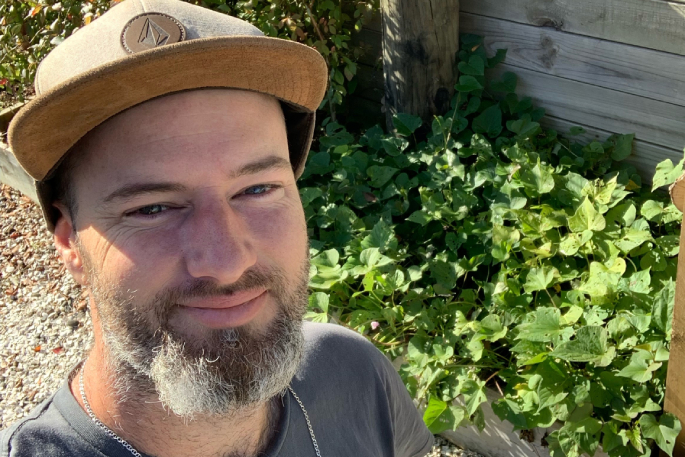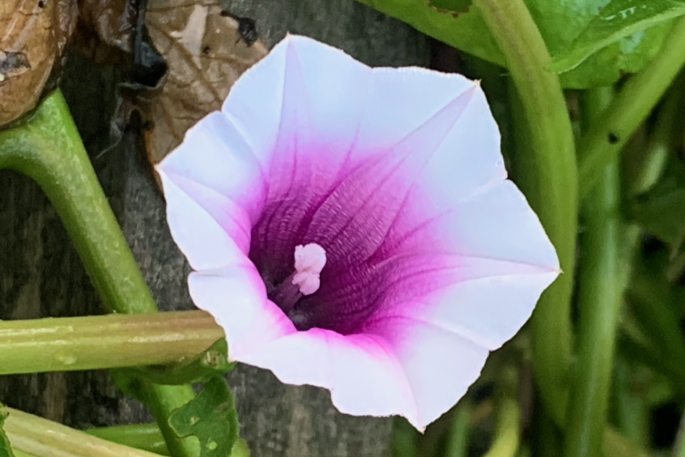In the verdant gardens of Tauranga, a dedicated resident with a green thumb has unearthed an astounding botanical treasure – a rare flowering of a red kūmara.
For the past couple of years Welcome Bay’s Sam Mockford has diligently tended to his garden, nurturing a variety of vegetables.
“I have around eight to 10 kūmara plants down currently,” says Sam.
“Been growing my own food for a couple years now.”
He had heard a couple of weeks ago that the red kūmara flower is very rare.
“Never thought I’d get one though.”
He first noticed the flowers one weekend last month.
“There were three flowers in total but two got damaged from the recent storms.
"And one remains, but I only noticed it today,” Sam said on April 13.
He grew some of the kūmara plants from sprouts and the rest he got from his partner Roselle Entwistle’s mother Jenny Innes.
“We love growing our own food because nothing tastes better than fresh food straight out the garden.”
 A delighted Sam Mockford, next to his kūmara patch. Photo: Sam Mockford.
A delighted Sam Mockford, next to his kūmara patch. Photo: Sam Mockford.
It is thought that kūmara plants only flower under great stress.
Stress may be related to the day length shortening at this time of year, or the state of high humidity combined with damp soil.
Coupled with this is that kūmara don’t flower often in New Zealand anyway, because they are a tropical vegetable.
The flower doesn’t last long, but before collapsing it puts on a spectacular display amongst the garden greenery.
The journey from bud to wilting is a covert operation, and would have been missed if Sam hadn’t been paying close attention.
The bud unfurls into a bloom that resembles a morning glory, and is typically purple or pink-tinged with no fragrance, just a vibrant colour and unique shape.
Likened to a cameo appearance in a blockbuster movie – short but impactful, the flowering period is quickly over.
If you blink, you miss it.
Sam’s keeping a close eye on the plants to see if more flowers will appear, already spotting new buds popping up amongst the plants.
“I’m just blown away that I have this wonderful rare flower growing on our property.”

